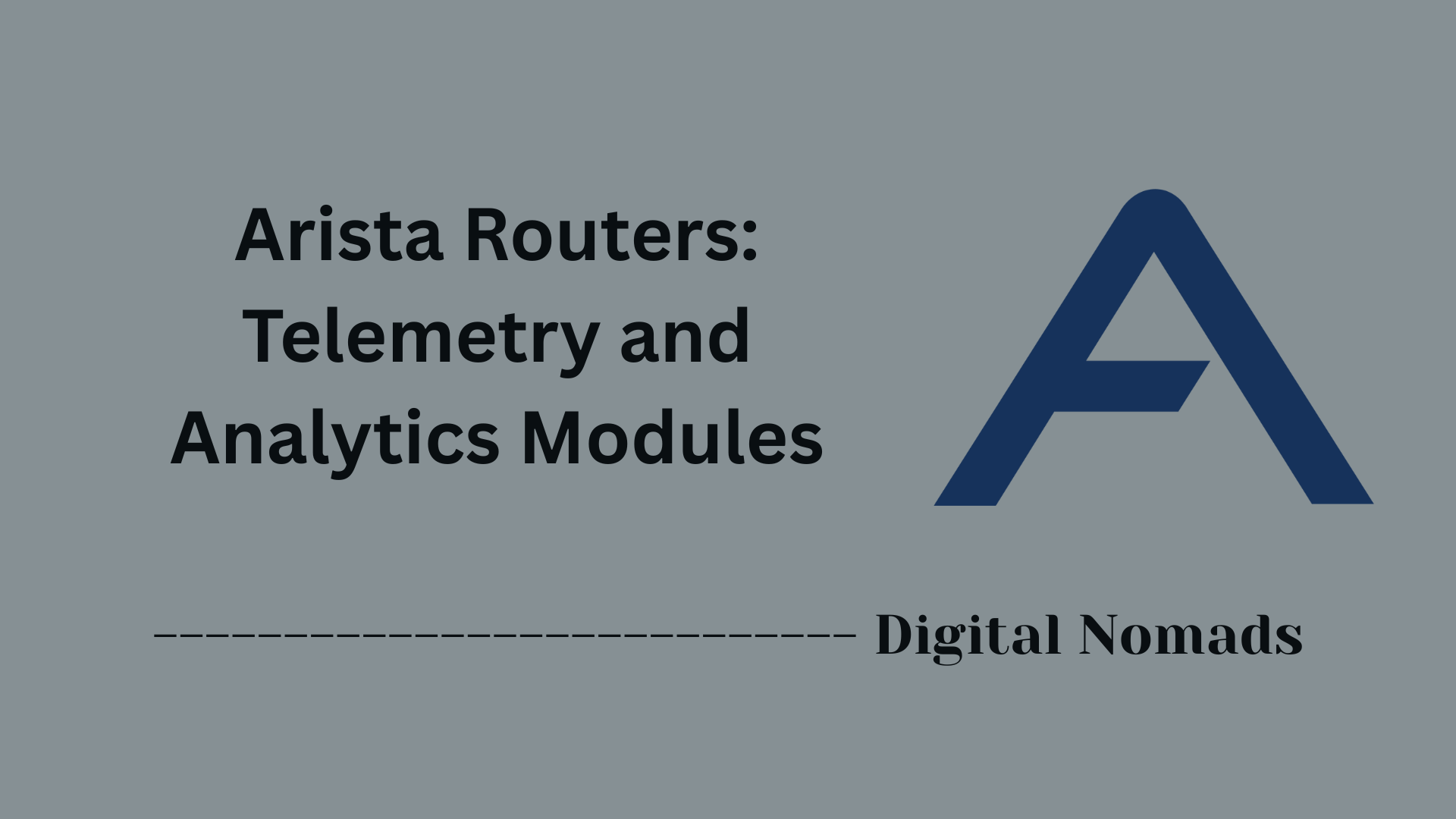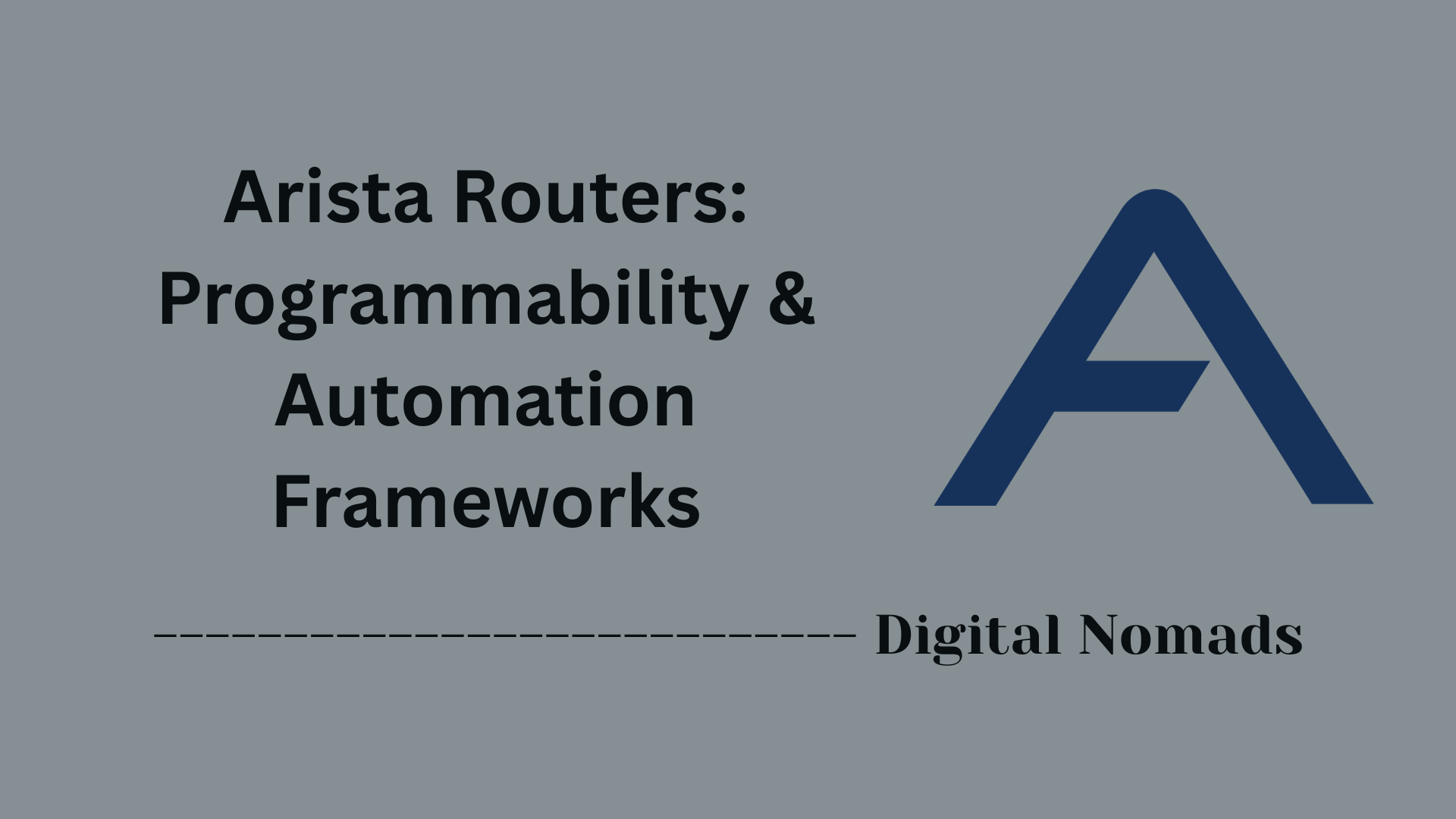Table of Contents
- Overview
- Supported Routing Protocols
- Arista Routing Engines and Architectures
- Platform Highlights
- Key Features and Innovations
- Common Use Cases
- Conclusion
Arista Routers Routing Protocol Engines: Overview
What Is It?
Arista Routers Routing Protocol Engines refer to the integrated software and hardware components within Arista routing platforms that implement, accelerate, and scale industry-standard routing protocols for managing network traffic. These engines are a core part of Arista’s Extensible Operating System (EOS), enabling routers to intelligently select paths for data packets across diverse, complex, and high-speed environments, from data centers to wide-area networks.
Why Do You Need to Know About It?
Understanding Arista’s routing protocol engines is crucial because:
- Scalability and Performance: Modern digital operations, cloud computing, and large-scale enterprises require routers that can support millions of routes without performance degradation.
- Network Resilience and Agility: High availability, rapid convergence, and dynamic traffic engineering are essential for minimizing downtime and ensuring continuous service.
- Unified Operations: Arista’s approach allows consistent management and automation across cloud, data center, and WAN, making networks easier to operate and evolve.
- Security: Integrated features like DDoS protection, in-line encryption, and robust policy enforcement help secure critical infrastructure from modern threats.
How Does It Work?
Arista Routers Routing Protocol Engines work by combining:
- Hardware Acceleration: Specialized silicon engines such as FlexRoute™, AlgoMatch™, and modular databases process routing protocols at line-rate, enabling rapid lookups for millions of IPv4/IPv6 prefixes.
- Advanced Software Stack (EOS): The EOS operating system offers a single consistent image, supporting a wide array of protocols (BGP, OSPF, IS-IS, MPLS, EVPN, etc.) and real-time analytics via NetDB™ streaming.
- Programmability and Analytics: APIs, telemetry, and CloudVision orchestration enable automation, deep visibility, and dynamic policy changes for DevOps-driven network operations.
- Unified Control Planes: Technologies like EVPN seamlessly consolidate Layer 2 and Layer 3 services for both on-premises and cloud use cases.
In essence, Arista’s routing protocol engines provide the intelligence and scalability needed to support next-generation connectivity—increasing agility, security, and efficiency for all types of organizations.
Supported Routing Protocols
Arista routers, powered by EOS, support a wide range of industry-standard routing protocols enabling flexible, scalable, and robust network architectures. Here’s what you’ll find:
- Static Routing: Simple, manually defined paths for deterministic traffic flow, often used for default routes or smaller environments.
- RIP v2: Basic distance-vector protocol for simpler networks, providing automatic route updates with support for authentication.
- OSPF & OSPFv3: Widely deployed link-state protocol supporting both IPv4 (OSPF) and IPv6 (OSPFv3), offering fast convergence and hierarchical design.
- IS-IS (Multi-Topology): Flexible, scalable protocol suitable for service providers and large enterprises, supporting multi-topology for IPv4 and IPv6.
- BGP / MP-BGP: Core protocol for inter-domain routing, supporting IPv4, IPv6, route reflection, confederations, and multi-protocol extensions for VPNs.
- IGMP, PIM-SM, PIM-SSM, PIM Bidir: Protocols for multicast routing and group management—essential for streaming, IPTV, and group communication use cases.
- MPLS (LDP, Segment Routing, RSVP-TE): Technologies enabling advanced traffic engineering, fast reroute, and scalable VPN architectures.
- EVPN: Modern control plane for Ethernet VPNs, leveraging BGP for unified Layer 2 and Layer 3 service delivery, often deployed over VXLAN or MPLS cores.
- Equal Cost Multipath Routing (ECMP): Distributes traffic across multiple best paths, supporting up to 512-way path redundancy for extreme scale and resiliency.
- IPv6 Routing: Full suite of protocols for modern dual-stack and IPv6-only deployments, including BGPv6 and OSPFv3.
Arista Routing Engines and Architectures
Arista routers employ innovative routing engines and flexible architectures to achieve high performance, robust scalability, and low-latency networking—meeting the demands of modern data centers, clouds, and WAN environments. Key highlights include:
- FlexRoute™ Engine: A hardware-based forwarding engine supporting the full Internet routing table in both IPv4 and IPv6. Delivers IP forwarding at Layer 3, routes over 2 million prefixes at line rate, and enables rapid convergence—all in silicon optimized for scale-out cloud and core networks[1][2][3].
- EOS NetDB™: Arista's Extensible Operating System integrates the NetDB™ engine, streaming real-time routing and network state for analytics, telemetry, and forensic troubleshooting. This enables live visibility and programmable automation for large-scale deployments[1][3].
- AlgoMatch™ Technology: Provides algorithmic matching for access control lists (ACLs), accelerated sFlow, and real-time traffic steering, improving scalability, security, and efficiency of policy enforcement across high-density routing platforms[3].
- Modular Database (MDB): Especially in platforms like the 7800R3 and R-series, the MDB allows flexible allocation of forwarding and lookup resources, supporting diverse roles from core routing to edge aggregation within a unified architecture[7].
- Universal Platform Architecture: Whether used as physical, virtual, or cloud routers, all Arista routing systems use identical EOS software and CloudVision orchestration, providing consistent operations and automation across peering, WAN, and inter-cloud scenarios[4][5].
- Adaptive Virtual Topology (AVT): Creates logical overlays for application-aware routing, allowing for granular policy, QoS, and traffic engineering by grouping applications and mapping virtual topologies to real-world demands[5][6].
- Secure Encrypted WAN Fabric: The WAN fabric leverages IPsec encryption, dynamic path selection, and automated virtual private networking to provide secure, resilient, and performant connectivity across data center, campus, branch, and cloud environments[5][6].
Through these engine innovations and architectural strategies, Arista platforms support multi-million route scalability, leading hardware-based route processing, and unified management—making them well-suited for cloud, service provider, and enterprise routing requirements.
Platform Highlights and Architectures
Arista routers deliver high-performance, scalable, and flexible networking across a range of physical, virtual, and cloud platforms. This unified approach leverages the Extensible Operating System (EOS) and CloudVision automation, powering networks in data centers, WAN, and multi-cloud environments. Below are the highlights by major platform:
-
7800R3 Series (Universal Spine):
- Up to 460Tbps system capacity and 96 billion packets per second forwarding
- Supports 100G and 400G high-density ports and ultra-deep buffers
- Modular design with investment protection—forward and backward compatibility for line cards
- Comprehensive L2/L3 features including MPLS, Segment Routing, VXLAN, EVPN, and tunnel encryption (MACsec, IPsec)
- Virtual Output Queues and cell-based fabric enable low latency (3.5µs) and fairness
- Cloud-grade automation and telemetry for monitoring and troubleshooting
-
7500R Series (Universal Spine):
- 150Tbps+ system capacity and up to 69 billion packets per second
- Wire speed multicast & unicast, ultra-large buffers per 100G port
- 128-Way MLAG and ECMP, seamless data center interconnect
- Extensive routing scale (>2M IPv4/IPv6 routes) via FlexRoute™ Engine
- DC-optimized front-to-rear airflow and integrated wirespeed MACsec encryption
- Zero-touch provisioning and hitless software upgrades
-
7280R Series (Universal Leaf):
- Fixed configuration, high-density 10/25/40/100GbE systems with up to 10.24Tbps capacity
- Advanced L2/L3 capabilities: MLAG, ECMP, large-scale VRF, precision timing
- Over 2 million IPv4 routes and 768K MAC addresses
- AlgoMatch™ and Accelerated sFlow for next-gen analytics and policy control
- VXLAN, EVPN, deep buffers for multimedia and cloud workloads
- Rich APIs and open programmability—runs user VMs and Linux tools
-
CloudEOS & WAN Routing Platforms:
- Cloud-scale routing on-premises and in public clouds, unified under EOS
- Integrated predictive analytics, encrypted WAN fabric, and cloud on-ramp
- Consistent operational model and automation across physical/virtual/cloud
| Platform | Max System Capacity | Port Density | Routing Scale | Key Features |
|---|---|---|---|---|
| 7800R3 Series | Up to 460Tbps[9][14] | Up to 576 x 400G[9] | Millions of routes[9] | Cell-based fabric, deep buffers, full L2/L3/MPLS, high redundancy, advanced telemetry[9][14] |
| 7500R Series | Up to 150Tbps[6][7][12][17] | Up to 1152 x 100G[17] | 2M+ IPv4/IPv6 routes[4][7] | FlexRoute engine, ultra-low latency, MACsec, Modular spine[6][7][12] |
| 7280R Series | Up to 10.24Tbps[13][18] | 48 x 100G[13] | 2M+ IPv4 routes, 768K MAC[8][13][18] | AlgoMatch, sFlow, deep buffers, virtual/cloud ready[8][13][18] |
| CloudEOS | Cloud-scale[1][2] | Virtual/Cloud ports[1] | Same software as physical platforms[1][2] | WAN routing, cloud on-ramp, encrypted fabric, automation[1][2] |
All Arista routing platforms operate a single EOS software image, ensuring consistent automation, compliance, telemetry, and programmability across the network—from edge to core to multi-cloud[1][2][9].
Key Features and Innovations
Arista Routers deliver industry-leading features and continual innovation to address the needs of modern networks—ranging from cloud-driven automation to advanced security and massive scale. Below are the core highlights:
- FlexRoute™ Engine: Hardware-based routing engine supports millions of IPv4/IPv6 routes at line rate, enabling seamless scaling for service providers and cloud networks[1][4].
- AlgoMatch™ Technology: Provides high-performance access control lists (ACLs), accelerated sFlow, and real-time traffic management to optimize policy enforcement and analytics at scale[1][2].
- Advanced Encryption (TunnelSec™, MACsec, IPsec): Offers in-line encryption from 10G up to 400G, securing data in transit without impacting network performance, and simplifying encryption deployment with TunnelSec™[1][6].
- Unified Control Plane (EVPN): Supports multiprotocol routing with a single EVPN control plane, enabling unified Layer 2 and Layer 3 services across MPLS and VXLAN, simplifying operations for both data centers and WAN[1][4].
- Segment Routing & MPLS: Advanced traffic engineering via seamless Segment Routing (SR-TE), Fast Reroute (TI-LFA/FRR), and support for LDP, RSVP-TE, and MPLS, providing flexible TE models for scalable wide-area networks[4].
- Integrated DDoS Mitigation & Security: High-scale ACLs, Flowspec for dynamic DDoS defense, robust RPKI support, Zero Trust Network Access (ZTNA), and real-time threat response for secure edge and core routing[2][5].
- Programmability & Automation: EOS APIs (RESTCONF/NETCONF/Go), CloudVision, and modular EOS SDK power automation, third-party integrations, and orchestration for day-zero to day-N operations[2][5].
- AI-Driven Networking: Proven support for AI workloads with features like Cluster Load Balancing and advanced telemetry, maximizing performance in AI and ML data center clusters[8][9].
- Comprehensive Telemetry & Analytics: Real-time monitoring with hardware-assisted sFlow, IPFIX, OAM stack, and CloudVision analytics, providing deep visibility and precise troubleshooting across networks[2][4].
- Sustainable Design & Cloud Readiness: Energy-efficient, high-density architectures with seamless integration for hybrid and multicloud platforms, supporting containerized, virtual, and physical deployments[5].
Together, these capabilities make Arista routers ideal for modern cloud, WAN, data center, and edge networking, delivering resilience, automation, and high scalability in a unified platform.
Common Use Cases
Arista routers are designed to address a wide range of networking requirements across enterprises, service providers, and cloud environments. Here are some of the most common use cases where Arista’s routing protocol engines and platforms excel:
- Internet Peering and Edge Routing: High-capacity BGP routing for internet exchange points (IXPs), edge peering, and aggregation sites, providing scalable route processing and rapid convergence.
- Enterprise WAN and Secure VPNs: Flexible support for MPLS, EVPN, encrypted WAN fabrics (TunnelSec™), and IPsec tunnels enable secure, resilient, and efficient wide area connectivity.
- Carrier-Grade Core and Aggregation: Large-scale routing for service provider cores leveraging FlexRoute™, Segment Routing, and advanced MPLS traffic engineering to deliver scalable, low-latency connectivity.
- Multi-Cloud Interconnect: Seamless integration of on-premise, data center, and multiple public cloud environments via CloudEOS and VXLAN EVPN overlays, supporting unified operations and automation.
- High-Scale Data Center Fabrics: Leaf-spine architectures using 7280R and 7500R driven by EOS and CloudVision for high-density, low latency, and fully automated IP routing within modern cloud data centers.
- IoT and Edge Computing: Distributed routing with secure encrypted WAN access across branch, campus, and edge locations, supporting low-latency applications and scalable device connectivity.
- DDoS Mitigation and Network Security: Flowspec and advanced ACLs enable dynamic threat detection and mitigation at line rate, securing routing infrastructure in hostile environments.
- AI/ML and High-Performance Computing Clusters: Optimized routing for large AI/ML workloads supporting massive east-west flows with ultra-low latency and high throughput in data centers.
These use cases highlight the versatility of Arista routing platforms and protocol engines, making them ideal for operators looking to build scalable, secure, and programmable networks.
Conclusion
In this blog post, we explored the powerful capabilities of Arista Routers and their advanced Routing Protocol Engines. We learned how Arista supports a broad spectrum of routing protocols—from static routes and BGP to sophisticated technologies like Segment Routing and EVPN—ensuring flexibility and scalability for a wide range of network environments.
We also delved into the innovative routing engines and architectures behind Arista platforms, such as the FlexRoute™ Engine and AlgoMatch™ technology, which deliver industry-leading route scale, hardware-accelerated forwarding, and robust programmability. The platform highlights showcased Arista’s versatile product portfolio, from the high-capacity 7800R and 7500R series to the versatile 7280R leaves and cloud-native CloudEOS solutions, all unified by EOS software for seamless automation and telemetry.
Key features like integrated encryption, unified control planes, AI-driven networking, and comprehensive telemetry underline Arista’s commitment to innovation, security, and operational simplicity. Additionally, we reviewed common real-world use cases including internet peering, enterprise WAN, multi-cloud interconnects, and high-performance data centers—demonstrating the broad applicability and reliability of Arista routing solutions.
Whether you’re a network architect, engineer, or IT leader, Arista Routers provide the technology foundation necessary to build resilient, scalable, and programmable networks that can handle today’s demands and tomorrow’s challenges.
Thank you for following along! We hope this deep dive has given you valuable insights into how Arista’s routing protocol engines and platform innovations can help transform your network. Stay tuned for more updates and technical explorations from our blog!




